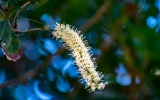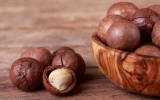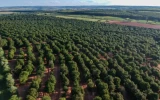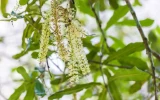How Long Does a Macadamia Tree Take to Fruit?
When cultivating a macadamia tree, your success hinges on three pivotal growth factors: climate, soil, and water. Each of these elements plays a crucial role in not just the survival but also the fruiting timeline of your macadamia tree. In this article, we'll find out how long it takes for macadamia trees to fruit.
Typically, a macadamia tree takes approximately 7 years to start producing fruit, but this varies depending on whether you start with seeds or grafted plants. Starting with seeds means it can be over a decade before you see any nuts, whereas grafted plants might start bearing in half that time.
How you care for your trees and which pollination methods you employ also play crucial roles in how quickly your macadamia tree will start to fruit. As you read further, we'll explore how these factors affect fruiting time in macadamias.
Having insights on the years required before profiting from the first nut harvest can be very beneficial for someone starting a macadamia farm from nothing.
Summary
- Macadamia trees grown from seed typically take 7 to 10 years to produce fruits due to the slow growth rate and maturation process of the macadamia tree.
- Grafted macadamia trees take approximately 4 to 6 years to fruit and allow the resulting tree to inherit the desirable traits and characteristics of the parent tree, leading to earlier fruit production.
- Macadamia nuts typically take about 5 to 6 months to ripen after the flowers have been pollinated, and these nuts need to remain on the tree until they are fully ripe to ensure optimal flavor and texture.
- Some macadamia varieties may fruit earlier due to selective breeding, adaptation to specific climatic conditions, and improved nutrient uptake and utilization.
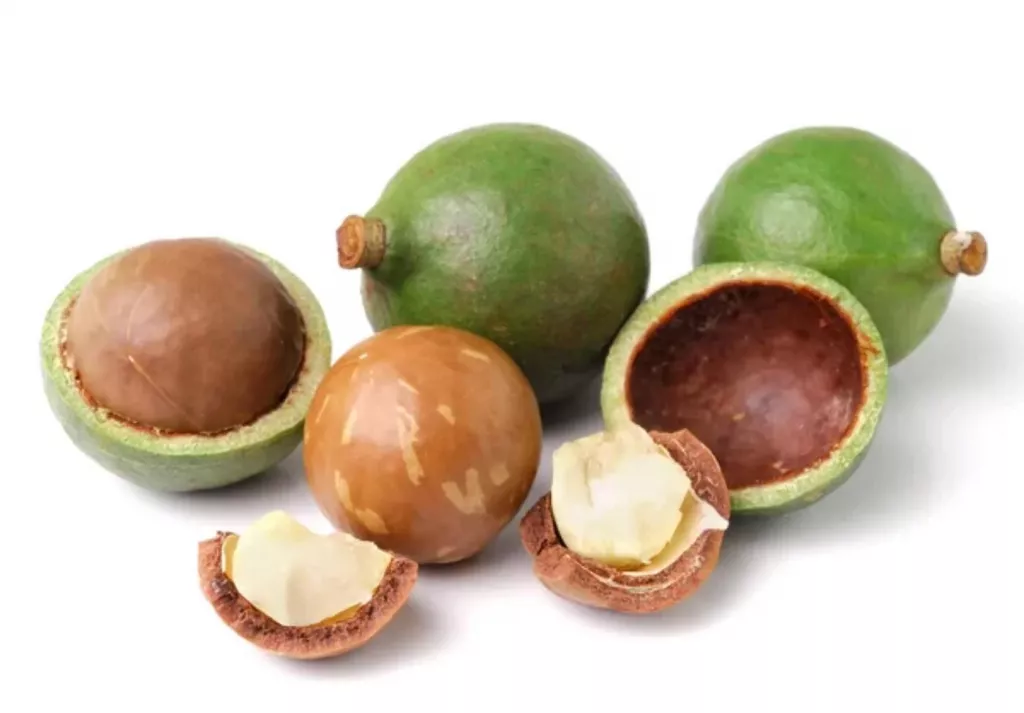
On this page:
How Long for a Macadamia to Bear Fruits
Typically, macadamia trees take 7 years to produce their first crop. When grown from seed, this could extend up to 10 years. However, starting with grafted plants can significantly reduce this timeframe.
The table below shows the difference in the average time before the first harvest if you grow macadamias from seed vs. from grafted trees:
| Method | Average Time to First Harvest |
|---|---|
| From seed | Typically 7-10 years |
| Grafted trees | Approximately 4-6 years |
Macadamias grown from seed takes 7-10 years to produce fruits
Macadamia trees grown from seed typically take 7 to 10 years to produce fruits. This extended timeline is due to the slow growth rate and maturation process of the macadamia tree.

The growth of a macadamia tree begins with the planting of the seed. The seedling goes through several stages of growth before it reaches maturity and starts to produce fruits.
During the initial years, the tree focuses on developing a strong root system and establishing itself in the soil. As the tree matures, it allocates more energy towards the production of flowers and ultimately, fruits.
Factors such as climate, soil quality, and care practices can influence the growth rate of macadamia trees. In regions with optimal conditions, including a subtropical climate and well-draining soil, the growth process may be slightly accelerated. Conversely, less favorable conditions can prolong the time it takes for the tree to bear fruit.
While the long wait for fruits may seem daunting, macadamia trees are known for their longevity and productivity once they reach maturity.
With proper care and maintenance, mature macadamia trees can continue to produce fruits for several decades, making the initial investment of time and patience well worth it.
Grafted macadamia trees take 4-6 years to fruit
Grafted trees have a shorter time to maturity because they are created by attaching a cutting from a mature macadamia tree onto a rootstock. This allows the grafted tree to inherit the desirable traits and characteristics of the parent tree, leading to earlier fruit production.
Grafting is a common horticultural technique used to propagate desirable plant varieties. In the case of macadamia trees, grafting allows the resulting tree to inherit the desirable traits and characteristics of the parent tree, such as disease resistance, fruit quality, and yield potential.
The use of grafting in macadamia tree propagation accelerates the time to maturity and fruit production. By grafting a cutting from a mature macadamia tree onto a rootstock, the resulting grafted tree bypasses the juvenile phase of growth and development, allowing it to start producing fruit at an earlier stage compared to trees grown from seeds.
This is particularly advantageous for commercial macadamia orchards, as it enables growers to establish productive trees more quickly.
Additionally, grafted macadamia trees exhibit more uniformity in terms of fruit quality and yield compared to trees grown from seeds. This uniformity is desirable for commercial orchards, as it facilitates management practices such as harvesting and pest control.
Furthermore, grafting allows growers to select specific macadamia cultivars with known characteristics and performance, ensuring that the resulting grafted trees will exhibit the desired traits.

This level of predictability and control over the characteristics of the trees is beneficial for commercial production, as it allows growers to focus on cultivating high-quality and high-yielding macadamia trees.
If you want to know which propagation method should you consider to grow macadamia trees successfully, you can start by reading this article.
Maturation Process of a Macadamia Tree
The maturation process of a macadamia tree is a gradual journey from seed to fruiting, spanning several years of growth and development.
| Stages Of Growth Of Macadamia | Duration | Important Events |
|---|---|---|
| Germination period | 4 to 12 weeks | Sprouting of seeds |
| Sapling development | 2 to 3 years | Root system and branching structure development |
| Maturation stage | 7 to 10 years | First signs of nut production |
Seeds start to sprout during the germination period
During the germination period, your macadamia tree begins its life cycle. The seeds take about 4 to 12 weeks to sprout, with conditions such as temperature and moisture playing a significant role.
During this stage, you need to ensure that the seeds are fresh and planted in well-draining soil to optimize the chances of successful germination.
Branches and roots develop during the sapling stage
Once germinated, the sapling development phase kicks in. Over the next 2 to 3 years, your macadamia tree focuses on developing a strong root system and branching structure.
This period is critical for establishing a solid foundation that will support the tree's future yield. Proper care during this time includes regular watering, strategic fertilization, and protection from harsh environmental conditions.
Nut production is evident during the maturation phase
Macadamia trees take their time to mature, typically reaching full fruit-bearing potential 7 to 10 years after planting. Environmental factors such as climate and soil quality heavily influence this timeframe.
During the tree maturation phase, you'll see the first signs of nut production. Once mature, these trees are capable of producing a substantial yield annually, with proper care and optimal growing conditions.
Macadamia nuts ripen during maturation phase
Macadamia nuts typically take about 5 to 6 months to ripen after the flowers have been pollinated. The nuts start to develop and grow in clusters on the macadamia tree, and they gradually mature over the course of several months. The nuts need to remain on the tree until they are fully ripe to ensure optimal flavor and texture.
The ripening process involves the nuts changing from a pale, soft shell to a harder, darker shell. As they mature, the nuts also develop their characteristic rich, buttery flavor.
Harvesting macadamia nuts at the right time is crucial to ensure that they have reached their full ripeness and are ready for consumption or processing.
Factors such as climate, soil conditions, and the specific variety of macadamia trees can influence the exact timing of nut ripening. Growers must monitor the nuts closely to determine the optimal time for harvest, which is typically indicated by changes in shell color and firmness.
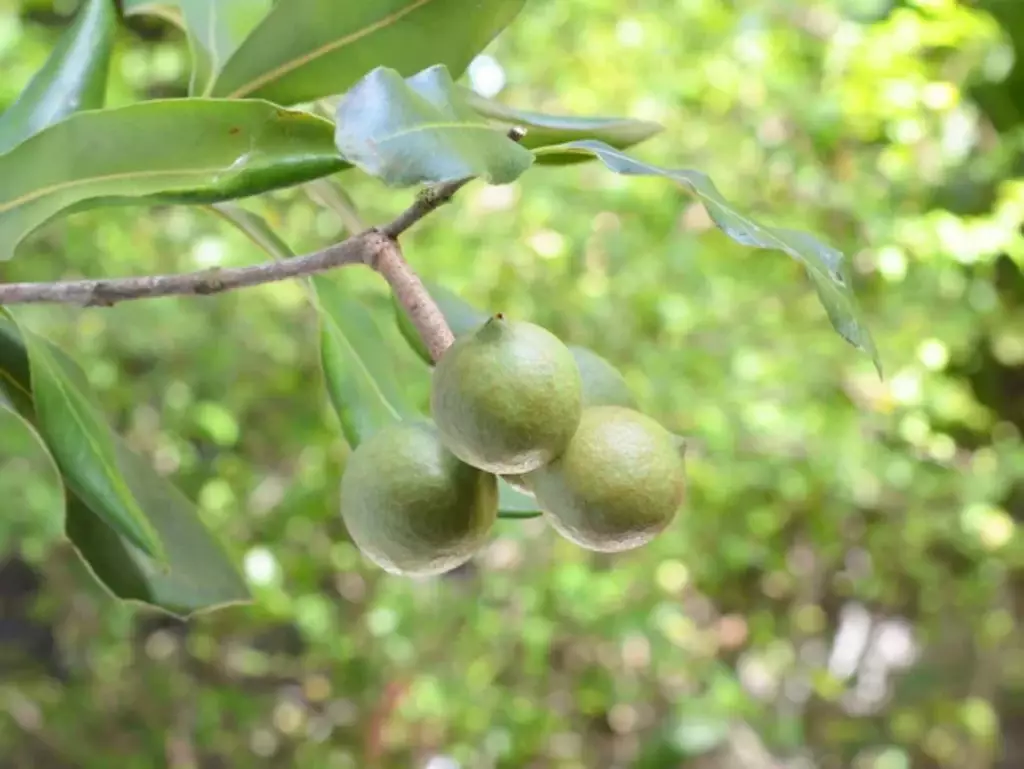
Factors Influencing Bearing Age in Macadamias
Several factors can influence the time it takes for a macadamia tree to bear fruit:
Some macadamia varieties fruit earlier than others
Some macadamia varieties may fruit earlier than others due to a combination of genetic factors, environmental conditions, and management practices.
Some varieties may have been selectively bred or naturally evolved to exhibit earlier fruiting characteristics. These genetic differences can influence the timing of flowering, fruit set, and maturation.
Additionally, varieties that are more adapted to specific climatic conditions may exhibit earlier fruiting in response to favorable environmental cues. Also, varieties that are more efficient in nutrient uptake and utilization may have the ability to initiate fruiting earlier, especially when provided with optimal soil fertility and nutrition management.
There are also macadamia varieties that are more resistant to common diseases and pests which may experience less stress and damage to their reproductive structures, allowing for more reliable and timely fruiting.
Cross-pollination can enhance fruit set and nut quality
Macadamia trees are self-incompatible, which means they require cross-pollination from another genetically distinct tree in order to produce a successful fruit set.
In the absence of cross-pollination, the fruit-bearing time in macadamias can be negatively impacted, leading to reduced yields and potentially lower nut quality. Inadequate pollination is also one of the factors why some macadamia trees fail to produce fruits.
When macadamia trees are cross-pollinated, it enhances the fruit set and nut quality in several ways. Firstly, cross-pollination increases genetic diversity, which can result in more robust and vigorous offspring.
This genetic diversity can also lead to improved resistance to diseases and pests, ultimately contributing to better overall tree health and productivity.
Additionally, cross-pollination can help to ensure a more consistent and reliable fruit-bearing time in macadamias. By receiving pollen from a different tree, the chances of successful fertilization and fruit set are increased, leading to more uniform and abundant yields.
This can be particularly important in commercial macadamia orchards, where consistent fruit production is essential for economic viability.
Furthermore, cross-pollination can have a positive impact on nut quality. The exchange of pollen between different trees can result in a broader mix of genetic traits, potentially leading to nuts with desirable characteristics such as size, flavor, and shelf life. This can be especially advantageous for growers aiming to produce high-quality macadamia nuts for the market.
Trees in optimal climates for macadamia growth will fruit quickly
Macadamias thrive in subtropical and tropical climates with well-drained soil and relatively high humidity. In such optimal climates, macadamia trees are more likely to fruit quickly compared to regions with less favorable conditions.
The warm temperatures and adequate moisture in subtropical and tropical climates create an environment that is conducive to the growth and development of macadamia trees. In these regions, the trees are able to establish strong root systems and healthy foliage, which are essential prerequisites for successful fruit production.
Additionally, the longer growing seasons and milder winters in these climates provide macadamia trees with the necessary conditions to continuously develop and mature their fruit.
Conversely, in less optimal climates, where temperatures may be too cold or too hot, or where there may be insufficient rainfall or excessive humidity, macadamia trees may experience delays in fruit bearing. Extreme weather conditions can stress the trees, affecting their ability to set fruit and impacting the overall fruit-bearing time.
You can find a more detailed discussion of the ideal climate for macadamia trees as you read this article.
Caring for your trees can help them bear fruit sooner
Adequate watering, fertilization, and pest management are crucial factors in promoting the health and productivity of macadamia trees.
Adequate water supply ensures that the trees can carry out essential physiological processes such as nutrient uptake, photosynthesis, and transpiration. Consistent and sufficient watering helps to maintain soil moisture levels, which is particularly important during the critical stages of flowering and fruit development.

Macadamia trees also require a balanced supply of essential nutrients for optimal growth and fruit production. Fertilization plays a key role in providing these nutrients, particularly nitrogen, phosphorus, and potassium, as well as micronutrients such as magnesium, calcium, and sulfur.
A well-planned fertilization program tailored to the specific needs of macadamia trees can enhance tree vigor, promote flowering, and support the development of healthy fruit.
Lastly, implementing integrated pest management strategies, including monitoring, biological control, cultural practices, and targeted pesticide applications, can help minimize pest damage and maintain tree vigor.
By preventing pest infestations and minimizing disease pressure, macadamia trees can allocate more resources toward growth and fruit development, ultimately leading to earlier fruiting.
